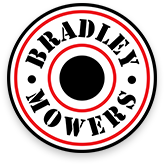We know that everyone gets relieved when winter is finally gone, spring is in, and the grass starts to grow. Spring is the time when homeowners get the urge to start perfecting their lawns. Unfortunately, the urge to get their lawns back in shape always drives them into making some grievous mistakes that cost them for the rest of the year. In this post, we shall discuss some of the lawn care mistakes to avoid this year.
#1- No Raking
I think we all agree that no one likes to rake. Raking is always a dreaded chore each year, and most homeowners end up putting this task on the backburner. However, putting it off can result in serious damage to the lawn. Over winter, our lawns develop snow molds (matted down dead looking patches of grass). Snow molds have the potential to kill the leaves, and this is why it is important to rake.
Additionally, raking helps in thatch removal. Thatch is un-decomposed organic debris that accumulates near the soil surface. A thatch build-up forms a fairly dense mass that retards the infiltration of water into the soil. Also, a layer of thatch can provide an excellent breeding ground for pests and make the process of mowing the lawn a challenge.
#2- Neglecting Pest Problems
Like any other planting, lawns can experience a variety of problems. One of the biggest mistakes that homeowners make is ignoring signs of pest infestation. Insects such as grasshoppers can attack grass blades. Burrowing rodents, like the gophers, may munch through grass roots causing green tops to die. It is usually not difficult spotting dying patches of lawn.
Therefore, if you spot a dying patch of lawn this year, it’s necessary to take appropriate measures to minimize infestation. Failing to take the necessary steps to remedy this issue could have severe repercussions.
#3- Cutting Grass Too Low
Mowing is a common task that every homeowner with a lawn must do to keep his/her lawn looking perfect. During the process of mowing, people make several mistakes that end up costing them. Perhaps the most common mistake people make when mowing is improper mowing height. Even though some types of grass can be mowed at 1 inch or less, that doesn’t mean that all grasses should be mowed to such lengths.
As a matter of fact, there is a direct link between the length of the roots and that of the height of the top of the turf. Some cool season grasses such as the tall fescue and Kentucky bluegrass thrive and have fewer weeds when mowed closer to 3-3 ½ inches. Taller turf equates to longer roots and more soil profile for the turf to absorb water from.
Additionally, when you cut your grass too low, you will be damaging the blades. This makes the grass less able to absorb sunshine or draw excess moisture off the ground. Cutting your grass too low may seem like a good idea, but particularly in the heat of summer, it is less likely to survive.
While lawn care is not easy or fun, it’s important that you handle your lawn this spring with due diligence to avoid damage to it when summer comes. By avoiding these common mistakes, we believe that you will have a perfect, emerald green lawn that your neighbors will envy.
